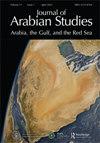The GCC and Changing Global Energy Environment
Q1 Social Sciences
引用次数: 1
Abstract
Abstract Global energy trade in hydrocarbons is being significantly re-oriented from the Atlantic basin to the Asia-Pacific region, with energy markets shifting their focus along the same patterns as the global economy –– towards the Asia-Pacific. The net result has been the centre of gravity of energy moving towards Asia and its large and emerging economies. The world is at the same time becoming a system of “world regions” and more urbanized, with the share of population of LDCs living in urban areas rising from 46% in 2014 to 57.9% in 2035. An emerging world region is arguably continental Asia in which East, Central, South and West Asia play a shaping part and developing its “Asianization”. It is argued here that economic orientation and urbanization trends will significantly impact global, and particularly Asian, energy markets thus determining the course of action of energy exporters of the GCC countries, and those of Central and West Asia. In Asia’s uneven energy markets, while China will lead energy demand growth in Asia in the 2020s, it will be India which likely will take up China’s mantle after 2025, thus maintaining and deepening the Persian Gulf’s “Asianization” and Asian energy interactions as part of a deeper integration of Asian economies.海湾合作委员会与变化中的全球能源环境
全球碳氢化合物能源贸易正显著地从大西洋盆地转向亚太地区,能源市场的焦点正沿着与全球经济相同的模式转向亚太地区。最终的结果是,能源的重心向亚洲及其大型和新兴经济体转移。与此同时,世界正在成为一个“世界区域”体系,城市化程度越来越高,最不发达国家的城市人口比例从2014年的46%上升到2035年的57.9%。一个新兴的世界地区可以说是亚洲大陆,东亚、中亚、南亚和西亚在其中发挥着塑造作用,并在发展其“亚洲化”。本文认为,经济导向和城市化趋势将对全球,特别是亚洲能源市场产生重大影响,从而决定海湾合作委员会国家以及中亚和西亚能源出口国的行动方针。在亚洲不均衡的能源市场中,虽然中国将在21世纪20年代引领亚洲能源需求增长,但印度可能会在2025年之后接替中国的位置,从而维持和深化波斯湾的“亚洲化”和亚洲能源互动,作为亚洲经济更深层次一体化的一部分。
本文章由计算机程序翻译,如有差异,请以英文原文为准。
求助全文
约1分钟内获得全文
求助全文

 求助内容:
求助内容: 应助结果提醒方式:
应助结果提醒方式:


